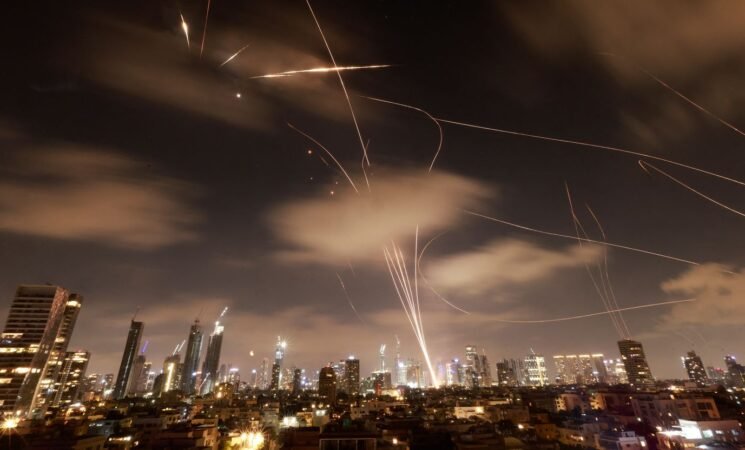10 November 2025, NIICE Commentary 11914
Dr Punsara Amarasinghe
Use of Occultism in Spycraft and Warfare in History
Occultism and spy craft have often intersected, shaping espionage in surprising ways. Far from being mere pseudoscience, this alliance extends from antiquity—citing examples from the time of Moses—to the present. A recent claim by a senior Iranian official, accusing Israel of using occult powers during a 12-day escalation last June, demonstrates ongoing interest in the fusion of the supernatural and intelligence gathering. History reveals that partnerships between spies and occultists have repeatedly influenced the world of espionage.
Sir Francis Walsingham, who structured 16th century English espionage, encouraged English witches to support England's internal protection against threats from Philip II of Spain. John Dee, a renowned mathematician and occultist, used his mystic reputation to covertly gather information benefiting British interests. Dee’s example established a pattern where mysticism and occult practices became intertwined with espionage in subsequent centuries. It was not without reason that the Russian occultist Madame Blavatsky and the infamous British magician Aleister Crowley were frequently depicted as spymasters, given their reputed connections with major intelligence agencies. In particular, during the Second World War, Crowley’s cultivated anti-British persona provided British intelligence with a plausible pretext to employ him in gathering information from Germans who eagerly received him.
Clandestine Programs in Cold War
The geopolitical tensions of the Cold War between the United States and the Soviet Union fostered a growing fascination with occultism, psychic abilities, and other supernatural phenomena within the sphere of espionage. Despite the Soviet Union’s official Marxist-Leninist rejection of supernatural phenomena, its intelligence agencies exhibited a notable interest in occult practices for covert operations—a tendency that can be traced to the peculiar case of Nina Kulagina, a woman reputed for her psychic abilities. Kulagina became a focal figure for Soviet scientists, who devoted significant effort to studying “bioenergetic” phenomena, seeking to understand the energetic fields purportedly surrounding the human body. Spurred by Soviet initiatives, the CIA launched its well-known Star Gate program, a psychic research project devoted primarily to the development of “remote viewing” capabilities. Recently declassified CIA documents reveal the considerable time and resources invested by the United States in this endeavor. The CIA coined the term “anomalous cognition” to describe the purported ability of psychic operatives to acquire information about distant or unseen targets through extrasensory perception.
Iranian Claims
As a whole, the above-mentioned examples from the 16th century to the Cold War provide concrete evidence affirming the cohabitation between occultism and espionage. Thus, it is worth perusing whether the Iranian senior official’s comments on Israel’s use of superpowers during the 12-day war make any sense. Iranian allegation against Israel. The former editor of the IRGC-linked newspaper Javan , Abdollah Ganji, stated
“After the recent war, a few sheets of paper were found on the streets of Tehran containing talismans with Jewish symbols." The same official argued, quoting some unverified sources, that Netanyahu met several Jewish occultists after Gaza strikes began. Iranian paranoia about Jewish occultism as an existential threat to the Islamic Republic has not emerged recently. Even before the 12-day war broke out this year, a plethora of allegations from Iran targeted Israel for invoking Jinns and other supernatural forces to cripple the Islamic regime. In March 2020, supreme leader Ali Khamenei alleged in a televised address that “enemies from among both jinn and human beings” were arrayed against Iran. From a vantage point, one can conjure that these claims of Tehran unfold Iran’s cultural narrative interwoven into a phobia that depicts Jews as villains, which is a quintessential example of modern anti-Semitism, as Iran often portrays Jews as collaborators with Jinns. For instance, a Shia cleric in Tehran, Mostaffa Karami, claimed that historically Jews have proved their ability to control Jinns by referring to the biblical figure Solomon’s ring . Apart from these highly speculative claims originating from Tehran, a peculiar resemblance can be observed between certain Jewish symbols—such as the Star of David and geometric triangles—and shapes etched into the desert near a missile base in central Iran.
Given there is no conspicuous evidence proving the involvement of occultism in Israeli strikes in Iran , the Iranian rumour remains far from the truth . Yet the use of occultism in espionage and warfare cannot be rejected . Israeli national psychic Uri Geller claimed recently in an interview with Jerusalem Post that Israel sought mystical support from a group of occultists, including himself, to destroy Iranian nuclear sites and military targets in the Operation Rising Lion. Suprrisingly this claim concedes Ganji’s speculation, leaving a sign of intrigue . Considering the peculiar history of Geller’s previous claims and his involvement in the National Security Agency’s StarGate project during the 1970s, his statement cannot be dismissed as mere fallacy. Geller participated in the StarGate project after American authorities recognized his alleged abilities as a potential asset in a covert program aimed at exploiting psychic powers for military and espionage purposes. According to Geller, the information obtained by American researchers contributed to the formulation of a plan to demilitarize an entire Russian city in the event of an escalation between the two superpowers. Certain details of this highly classified project entered the public domain when the NSA declassified a series of related documents in 2011.
Conclusion
Two hypotheses may be proposed regarding Iran’s claim about the use of supernatural powers during the twelve-day conflict between the two nations. The first suggests that narratives involving occultism—particularly the use of jinn and other supernatural elements—reflect deep-rooted anti-Semitic attitudes in the Middle East, which continue to draw upon medieval myths depicting Jews as sorcerers. The humiliation experienced by Tehran following the Israeli strikes, which inflicted severe damage on Iranian military installations, appears to have revived such archaic narratives about Jewish sorcery. These stories, serving as a form of psychological consolation for the regime, emerged as attempts to rationalize the devastation in terms that defied scientific explanation. The second, more ambiguous, hypothesis draws upon Geller’s assertions, noting that his involvement in the StarGate project lends a semblance of plausibility to his claims. Although no concrete evidence exists, it remains conceivable that clandestine programs under the supervision of Mossad or other Israeli security agencies might have been pursued in the service of national interests.
Dr. Punsara Amarasinghe is a post-doctoral researcher affiliated to the Institute of Law, Politics and Development at Scuola Superiore Sant Anna, Pisa.

